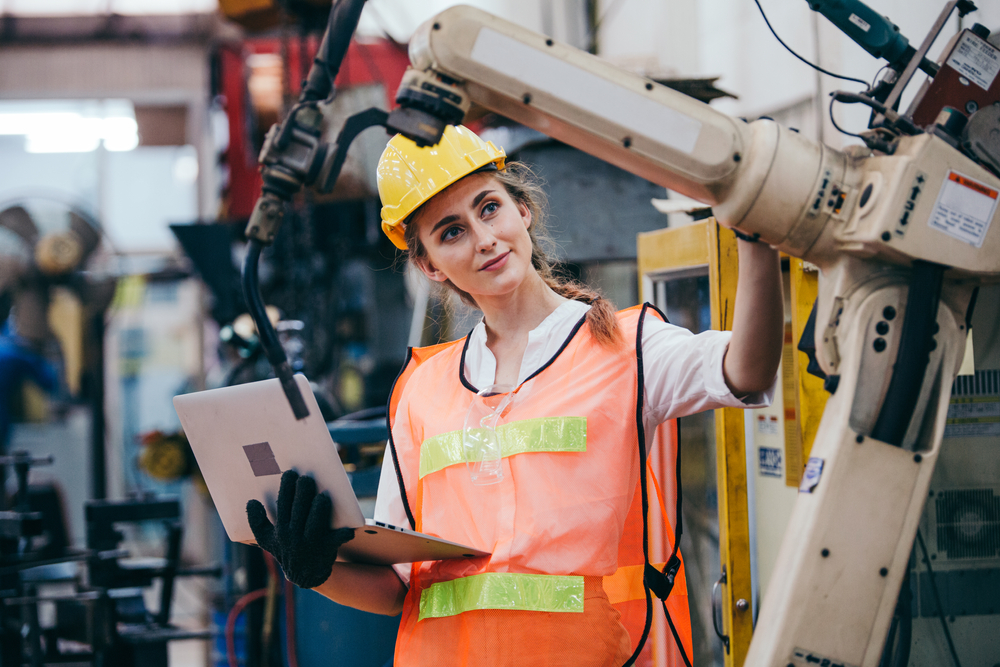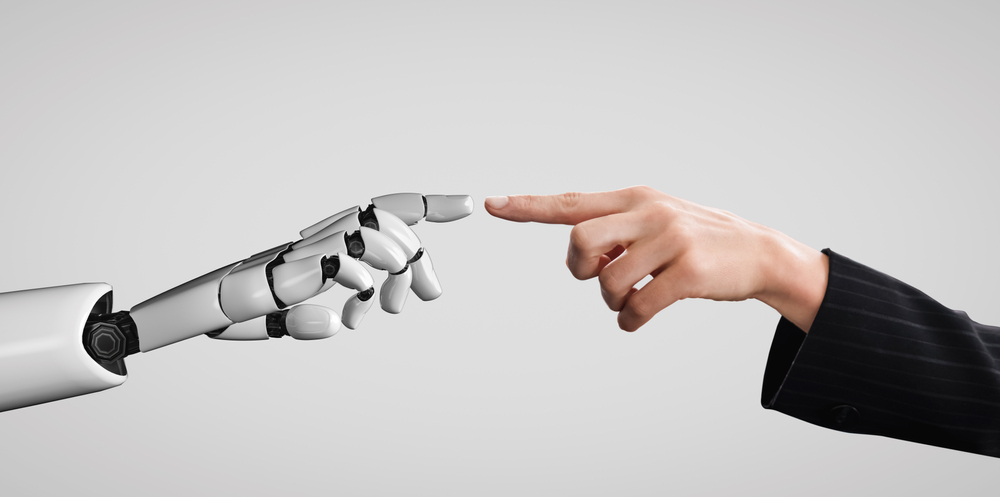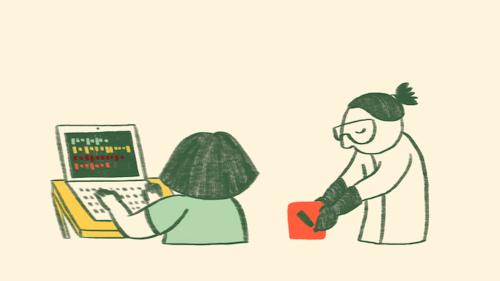The widespread adoption of robots and artificial intelligence (AI) is revolutionizing multiple industries and will likely reshape many aspects of our lives (West, 2018; Muro, Maxim, and Whiton 2019). Automation, industrial robots, and the forthcoming AI revolution have already changed the nature of work and production processes. A growing body of work has investigated the consequences of robots on labor market outcomes. Some studies have highlighted the negative effects of robots on the labor market opportunities among more exposed workers (Acemoglu and Restrepo 2020; Giuntella, Lu, and Wang 2022), whereas others have emphasized their positive effects on productivity, growth, and long-run outcomes (Graetz and Michaels 2018). Robots and AI are transforming the allocation of tasks among workers. This reallocation of tasks may directly affect work-related health risks as well as workers’ perception of job safety as robots are often used in tasks that are physically intense and may involve higher risks. Furthermore, increased uncertainty and the challenges faced by workers exposed to new technologies, increased automation, and the adoption of AI may also directly affect job satisfaction and individual well-being. The relationship between robots and more generally automation and the physical and mental health of workers is complex and has received so far only limited attention in the literature.
In this article we first review the recent literature on the economics of robots before turning to new research on the link between robots and physical and mental health outcomes. We conclude by discussing how these findings might inform our understanding of how AI affects workers’ health outcomes.
The rise of robots
The International Federation of Robotics (IFR) defines industrial robots as “automatically controlled, reprogrammable, multipurpose manipulator, programmable in three or more axes, which can be either fixed in place or fixed to a mobile platform for use in automation applications in an industrial environment.” The main difference between robotic technologies and artificial intelligence is that robots require physical manipulation, while AI does not require physical manipulation, but it instead involves computer-based learning (Manav and Seamans, 2019). Robots are increasingly being adopted to automate tasks traditionally performed by humans. In 2021, 517,385 new industrial robots were installed across the world, according to IFR. Between 2015 and 2021 worldwide annual robot installations more than doubled. This growth was led by China (see Figure 1), where 268,195 new robots were shipped, with the operational stock breaking the 1-million unit mark in 2021. The growth in China over the last decade has been incredibly rapid, led by the Chinese government’s ambition to become a robot powerhouse. In the U.S., installations increased by 14%, with the automotive industry still being by far the leading sector in terms of robot adoptions. Figure 2 illustrates the number of robots installed per 10,000 employees in the manufacturing industry in a number of countries.
The adoption of robots can result in incredible gains in efficiency, reduced errors, and increased productivity and accuracy. For example, Graetz and Michaels (2018) suggest that robot use contributed to approximately a 0.36 percentage point growth in annual labor productivity across the 17 countries they studied during the 1993-2007 time period, while at the same time raising total factor productivity and lowering output prices. They find no evidence of effects on total employment. However, others have raised concerns regarding the impact of robots and job displacement and its heterogeneous effects on the labor force. Acemoglu and Restrepo (2020) document how the introduction of industrial robots resulted in a significant decrease in employment in the U.S. manufacturing industry, which they estimate to be between 420,000 and 720,000 jobs from 1990 to 2014. The authors also find evidence of a decline in wages among those who did not lose their jobs. Giuntella, Lu, and Wang (2022) find similar negative effects when examining the impact on workers in China with the effects concentrated among less-educated workers. The effects on labor markets can vary across countries depending also on the characteristics of the labor market and its institutions. Dauth et al. (2021) show that robot exposure in Germany did not cause disruptive job losses, with the longer-term shift from manufacturing to services being driven by new labor market entrants, not by actual switchers.
Robots and the health of workers
According to the Bureau of Labor Statistics, private industry employers in the U.S. reported over 5,000 fatal work-related injuries and over 2.6 million nonfatal workplace injuries and illnesses in 2021. The total estimated cost of these incidents to the nation, employers, and individuals was approximately $167 billion, equivalent to about 3.5% of 2021 U.S. government budget outlays. In the manufacturing sector approximately 370,000 injuries were reported. These injuries are typically caused by contact with objects, overexertion and bodily reaction, falls, slips, and trips, and transportation accidents. Willful safety violations comprise only a small portion of OSHA’s citations. Complacency, rushing, frustration, and fatigue are often the cause of injuries through inattention and unintentional errors. The use of robots in the so-called 3Ds (dirty, dangerous, and difficult) in manufacturing may mitigate the risks associated with complacency and the inherent dangers of strenuous, repetitive tasks. Industrial robots can be used to perform physically intensive or dangerous tasks which are typically associated with higher incidence of injuries and detrimental effects on worker’s health (Gihleb et al. 2022). For instance, in car manufacturing (Pires et al. 2006), robots have been used in the handling of heavy components, welding operations, and exposure to toxic substances. Robots have also been extensively used in warehouses for lifting and carrying heavy items; tasks that typically would impact the risk of musculoskeletal injuries on the job. In the mining industry, autonomous mining vehicles and robotic drilling systems can operate in deep mines, tunnels, and areas with high exposure to toxic substances (Sammons et al. 2005). Automated systems can offer considerable safety benefits to human workers, as robots can help prevent injuries and adverse health effects resulting from working in hazardous conditions (Trevelyan et al., 2016). These include musculoskeletal disorders caused by repetitive or awkward movements or traumatic injuries. Robots also have the potential to mitigate numerous hazards in emergency response scenarios, such as chemical spills (Ishida et al. 2006). Additionally, robots can minimize risks arising from human error. When a task is repetitive and monotonous, humans are prone to make mistakes, while robots can consistently perform these tasks without errors.
However, robots can also introduce various hazards for workers (Kirschgens et al. 2021). For instance, industrial robots that are designed to operate at a distance from workers often lack the necessary sensory capabilities to detect nearby humans, creating a potential risk. Furthermore, the proliferation of collaborative robots, intended to directly interact and share workspaces with humans, can pose additional safety risks (Matthias et al. 2011). In the short-run, the lack of experience with robots may therefore temporarily increase risks. Surveys show some evidence that workers often feel unsafe working around robots (McClure, 2018, Yam et al. 2023). In fact, a recent analysis from the OSHA showed that Amazon’s serious injury rates are much higher than those observed by other companies and that injury rates were especially high at facilities with robots. An estimate from the Center for Investigating Reporting based on 150 warehouses analyzed over 4 years suggests that warehouses with robots experienced 50% more injuries (Evans 2020). Yet, this analysis is mostly descriptive and may also reflect the fact that in facilities where the risks are higher there may be more incentives to adopt robots to eventually reduce injury rates.
Automation and robots may also impact workers’ mental well-being. While these technologies can in fact increase productivity and efficiency, they may also increase job displacement and insecurity and affect job satisfaction. Workers may perceive new technologies as a threat to their jobs. Uncertainty about the future and the fear of job displacement may increase anxiety. Furthermore, the reallocation of job tasks and responsibilities may affect workers’ satisfaction with their job, particularly if workers feel as they are being replaced or allocated to fewer fulfilling tasks. Workers may also suffer from the stress associated with the process of adaptation to new systems (Sony and Naik, 2020, Nazareno and Shiff, 2021), may feel overwhelmed by technology-related demands and the need to learn how to use the new technologies (Lu et al. 2022). Workers who feel unprepared or not trained may experience feelings of incompetence and increased stress. Automation may also be linked to reduced social interaction among workers. Finally, malfunctions of the new technology may increase frustration and anxiety.
While the rapid adoption of industrial robots presents both new hopes and challenges to workers’ safety, health, and well-being, empirical evidence on robots’ impacts on workplace safety and health remains sparse. Ultimately, the impact of robot adoption on workers’ health is theoretically uncertain and remains an open question for empirical investigation. In what follows, we summarize some of the recent evidence on the impact of robots on both physical and mental health of workers.
Robots and physical health: Evidence
In a recent study (Gihleb et al. 2022), we explored the impact of robots on work-related injuries in the U.S. and Germany, two of the leading countries in the adoption of robots across the world. We measure exposure to robots using the initial distribution of sectoral employment across U.S. commuting zones in 1990 as a baseline to allocate the annual stock of robots adopted in each sector. This measure captures the geographical exposure to robots’ penetration in the labor market and follows an approach used by other authors (e.g., Acemoglu and Restrepo 2020). Using data from the OSHA over the period 2005-2011, we find evidence that exposure to robots led to a substantial reduction in the average number of injuries. In particular, a one standard deviation increase in robot exposure (1.34 robots per 1,000 workers) reduced work-related injury rates by approximately 1.2 injuries per 100 full-time workers (or approximately .15 standard deviation, see Figure 3). , With a back of the envelope calculation, we estimated that the increase in robots between 2005 and 2011 saved approximately $1.69 billion per year in injury costs (in 2007 dollars), which largely reflects the substantial decline in injury rates in the manufacturing firms. These changes are mirrored by a decline in the average job physical intensity.
Overall, these findings are consistent with the evidence by Gunadi and Ryu (2021), who use data from the Current Population Survey to show that a 10% increase in robots per 1,000 workers is associated with a 10% reduction in the share of low-skilled individuals reporting poor health. Exploring survey data from Germany, we find similar effects. Robot exposure is linked to a reduction in the risk of reporting any disability and a reduction in the share of workers employed in highly physically intensive tasks. Consistent with this evidence, Liu, Luo, and Seamans (2023) show that Chinese manufacturing workers that were more exposed to industrial robots exhibited a lower likelihood of suffering from illness or injury. At the same time, they also show that greater robot exposure was linked with worse mental health, especially among lower-educated and older workers.
An interesting domain where the new technologies may importantly contribute to increased safety of workers and patients is in healthcare, especially nursing homes. BLS data suggest that hospital workers experience significantly higher rates of overexertion injuries. In 2018, nursing assistants reported 15,360 cases of musculoskeletal disorders (MSDs), accounting for 5.6% of total MSD cases. The safety of both workers and patients is at risk during patient lifting and movement. Adverse events during the use of standard patient handling equipment have resulted in serious injuries and deaths, leading to considerable costs and irreversible tragedies. Moreover, the aging population, higher prevalence of obesity, and the shortage and aging of the healthcare workforce may contribute to an increase in adverse events. Eggleston, Lee, and Iizuka (2021) find that robot adoption in Japanese nursing homes increased employment and reduced difficulties in staff retention by reducing side effects such as back pain while increasing the quality of care. Their findings reveal that the adoption of mechanical equipment and wearable robots could substantially reduce injury rates among Japanese patient care workers.
Robots and mental well-being: Evidence
If on the one hand robots may reduce the risk of injuries and the physical burden associated with a job, on the other hand there are concerns that the increased feeling of job insecurity and uncertainty may have detrimental effect on the mental well-being of workers. Academic papers (Acemoglu and Restrepo 2020; Dauth et al. 2021, Anelli et al.) and the popular press have discussed the substitution effects of robots. The fear of losing a job may trigger anxiety and lower workers’ hopes. Previous studies have documented the effects of negative labor demand shocks on the mental health of workers, examining the impacts of exposure to trade and globalization or the effects of plant closures (Colantone, Crinò, and Ogliari 2019; Marcus 2013; Venkataramani et al. 2020).
The perceptions of job insecurity may exacerbate anxiety about job stability (Chui, Manyika, and Miremadi 2015; Frey and Osborne 2017) with detrimental impact on health and well-being over the long term. Previous studies document the relationship between job market opportunities, work-related anxiety, and mental health and well-being (Khubchandani and Price 2017; Reichert and Tauchmann 2017). Patel et al. (2018) use data from the General Social Survey to show how automation was linked to higher job insecurity and poorer health among workers.
Examining data from the Center for Disease Prevention and Control (CDC) and the Behavioral Risk Factor Surveillance System Survey (BRFSS), we find evidence that robot penetration was associated with sizable increases in drug and alcohol-related deaths and mental health problems (Gihleb et al. 2022). A one standard deviation increase in robot exposure raises deaths due to drug or alcohol abuse by 10.5%, and the number of mentally unhealthy days by 14.9% (see Figure 3). That is equivalent to say that an increase of one robot per 1,000 workers increased deaths by 8% due to drug or alcohol abuse and the number of mentally unhealthy days by 11.5%. These results are largely consistent with O’Brien, Bair, and Venkataramani (2022), who find that each additional robot per 1,000 workers was associated with more than eight additional deaths per 100,000 males aged 45-54 and approximately four additional deaths per 100,000 females in the same age group. Interestingly, they find that these effects were more pronounced in states with right-to-work laws and those with lower minimum wage rates.
Contrary to what we observe when analyzing U.S. data, our analysis from Germany suggests no effects of robot exposure on workers’ mental health and well-being. These results may be explained by the differential impact of robots on labor market outcomes in Germany. Robot exposure did not cause disruptive job losses in Germany where the individual risk of becoming unemployed was even lower among robot-exposed workers who were re-trained (Dauth et al. 2021).
Artificial intelligence, physical health, mental well-being
The recent findings linking robots to workers’ health likely have implications for the relationship between AI and workers’ health outcomes. In the past few years, there has been a striking increase in the adoption of AI by companies worldwide. According to McKinsey & Company, approximately 50% of companies reported using AI in at least one area of their business as of 2022. The global AI market is expected to grow by over 37% per year from 2023 to 2030. The investment in AI is rising rapidly, and its potential impact spans across domains including economic growth, healthcare, safety, transportation, as well as reducing costs and improving access to information, education, and training.
Similar to other technologies, AI also has the potential to decrease work-related risks. Smart technologies could be used to monitor machines, employees, identify and predict risks. AI may be also used to coordinate hazardous or physically demanding tasks (i.e., material handling, assembly and disassembly operations, welding, panting and coating, heavy machinery operations) without need of human interaction, thereby reducing the risk of injury to workers and minimizing their exposure to potential hazards. AI algorithms may also be used to predict safety risks in the workplace, identify hazards, and provide recommendations for preventive measures (Howard 2019). AI may help tracking and monitoring workplace conditions. It may be used to create immersive and interactive safety training simulations where workers could practice safety procedures and emergency responses in a virtual environment. Furthermore, AI may help in providing ergonomic recommendations and feedback to prevent musculoskeletal disorders. At the same time, AI-based systems are susceptible to cybersecurity threats that may compromise job safety. Furthermore, as workers interact with AI-powered machines, safety protocols will be essential to mitigate the risks associated with human-machine interaction.
While recent studies have started to examine the effects of AI on labor market outcomes and productivity (e.g., Acemoglu et al. 2022; Noy and Zhang 2023; Kanazawa et al. 2022), there is still limited knowledge regarding its influence on workers’ well-being and mental health. Workers worldwide are increasingly concerned about the impact of AI on their job opportunities. As with robotics, the rapid rise of AI is creating concerns among workers who fear increased job insecurity and the potential for being replaced by automation.
The consequences of AI on the labor markets will ultimately depend on how well it complements or substitutes human labor. On one hand, AI can enhance workers’ productivity and serve as a complement to their skills. On the other hand, AI has the potential to replace the work of many individuals. Agrawal et al. (2023) highlight how the distributional effects of technology depend on which tasks get automated and which workers have those tasks, rather than on automation per se. Furthermore, AI is reshaping the nature of job tasks, which can directly impact work satisfaction and feelings of dignity in the workplace (Bankins and Formosa 2023). The adoption of AI may also be linked to increased work expectations, intensifying workloads and increasing pressure on workers (Nazareno and Schiff, 2021). The need to acquire new skills or transition to different roles may also lead to feelings of inadequacy and anxiety. Furthermore, interacting with AI systems in the workplace may pose challenges in terms of usability, communication, and trust. At the same time, the difficulty in understanding or effectively utilizing AI technologies may cause frustration, stress, and negative emotions.
The balance between positive effects on labor market outcomes and potential displacement effects is an empirical question, especially in the short term, as workers undergo this transition and labor markets adjust to this technological revolution. The expansion of unemployment benefits or of the earned income tax credit (EITC) have been discussed as potential ways to mitigate the adverse effects of automation on workers (Maxim and Muro 2019). While some scholars have suggested universal basic income may alleviate the negative effects on workers affected by automation (Cabrales, Hernández, and Sánchez 2020), there are concerns on how these programs could be funded as the source of new funds would ultimately determine the distributional impact of these policies (e.g., Hoynes and Rothstein 2019) and on the impact they would have on human social interaction and sense of self-worth. Regulation and policies subsidizing enabling vs. replacing technologies and avoiding implicit subsidies for using machines rather labor may be crucial tools in governing this phase of transition (Acemoglu et al. 2020). At the same time, the ability of governments and firms to support human capital investments and re-training opportunities will play a decisive role in mitigating the potential negative effects on workers’ well-being and shape workers’ attitudes towards new technologies. Many European countries have introduced training and education programs to prepare workers for the radical changes automation brings. Perceived lack of autonomy has been shown to be a driving factor in worker well-being during technological transitions (Nazareno and Schiff 2021). How policymakers and companies involve workers as roles and tasks change can significantly affect their job satisfaction and mental well-being. According to a recent survey conducted by the European Commission, 61% of Swedes have a positive view of robots and AI. This is in part explained by the trust in the government safety net (i.e., health care, education, job transition programs) and in part by the collaborative efforts of the Swedish federal unemployment agency and the industry-union councils in supporting laid-off workers. Unions and work councils may also play a crucial role in making sure workers’ voices are heard and pro-actively work in making sure new technologies are used in a way that is most beneficial for workers (Harju, Jäger, and Schoefer 2021; Jäger, Schoefer, and Heining 2021).
Although it is probably too early to draw any conclusion about the effects of AI on the mental health of workers, current evidence on the impact of robots suggests that labor policies protecting more exposed workers, the design of re-training programs, and support to workers during these technological transitions may play a decisive role in mitigating any adverse effects of automation on the well-being of workers.
References
Acemoglu, Daron, David Autor, Jonathon Hazell, and Pascual Restrepo. 2022. “Artificial Intelligence and Jobs: Evidence from Online Vacancies.” Journal of Labor Economics 40 (S1): S293–340. https://doi.org/10.1086/718327.
Acemoglu, Daron, Andrea Manera, and Pascual Restrepo. 2020. “Does the US tax code favor automation?” No. w27052. National Bureau of Economic Research. https://www.nber.org/papers/w27052
Acemoglu, Daron, and Pascual Restrepo. 2020. “Robots and Jobs: Evidence from US Labor Markets.” Journal of Political Economy 128 (6): 2188–2244. https://doi.org/10.1086/705716
Agrawal, Ajay, Joshua Gans, and Avi Goldfarb. 2023. The Turing Transformation: artificial intelligence, intelligence augmentation, and skill premiums. Washington, DC: Brookings. https://www.brookings.edu/articles/the-turing-transformation-artificial-intelligence-intelligence-augmentation-and-skill-premiums/
Anelli, Massimo, Osea Giuntella, and Luca Stella. 2021 “Robots, marriageable men, family, and fertility.” Journal of Human Resources. 1020-11223R1.
Bankins, Sarah, and Paul Formosa. 2023. “The Ethical Implications of Artificial Intelligence (AI) For Meaningful Work.” Journal of Business Ethics 185 (4): 725–40. https://doi.org/10.1007/s10551-023-05339-7.
Cabrales, Antonio, Penélope Hernández, and Angel Sánchez. 2020. “Robots, Labor Markets, and Universal Basic Income.” Humanities and Social Sciences Communications 7 (1): 185. https://doi.org/10.1057/s41599-020-00676-8.
Chui, Michael, James Manyika, and Mehdi Miremadi. 2015. “Four Fundamentals of Workplace Automation.” McKinsey Quarterly, November. https://www.mckinsey.com/capabilities/mckinsey-digital/our-insights/four-fundamentals-of-workplace-automation.
Colantone, Italo, Rosario Crinò, and Laura Ogliari. 2019. “Globalization and Mental Distress.” Journal of International Economics 119 (July): 181–207. https://doi.org/10.1016/j.jinteco.2019.04.008.
Dauth, Wolfgang, Sebastian Findeisen, Jens Suedekum, and Nicole Woessner. 2021. “The Adjustment of Labor Markets to Robots.” Journal of the European Economic Association 19 (6): 3104–53. https://doi.org/10.1093/jeea/jvab012.
Eggleston, Karen, Yong Suk Lee, and Toshiaki Iizuka. 2021. “Robots and Labor in the Service Sector: Evidence from Nursing Homes.” w28322. Cambridge, MA: National Bureau of Economic Research. https://doi.org/10.3386/w28322.
Evans, Will. 2020. “How Amazon Hid Its Safety Crisis.” Reveal. September 29, 2020. http://revealnews.org/article/how-amazon-hid-its-safety-crisis/.
Frey, Carl Benedikt, and Michael A. Osborne. 2017. “The Future of Employment: How Susceptible Are Jobs to Computerisation?” Technological Forecasting and Social Change 114 (January): 254–80. https://doi.org/10.1016/j.techfore.2016.08.019.
Gihleb, Rania, Osea Giuntella, Luca Stella, and Tianyi Wang. 2022. “Industrial Robots, Workers’ Safety, and Health.” Labour Economics 78 (October): 102205. https://doi.org/10.1016/j.labeco.2022.102205.
Giuntella, Osea, Yi Lu, and Tianyi Wang. 2022. “How Do Workers and Households Adjust to Robots? Evidence from China.” w30707. Cambridge, MA: National Bureau of Economic Research. https://doi.org/10.3386/w30707.
Graetz, Georg, and Guy Michaels. 2018. “Robots at Work.” The Review of Economics and Statistics 100 (5): 753–68. https://doi.org/10.1162/rest_a_00754.
Gunadi, Christian, and Hanbyul Ryu. 2021. “Does the Rise of Robotic Technology Make People Healthier?” Health Economics 30 (9): 2047–62. https://doi.org/10.1002/hec.4361.
Harju, Jarkko, Simon Jäger, and Benjamin Schoefer. 2021. “Voice at Work.” w28522. Cambridge, MA: National Bureau of Economic Research. https://doi.org/10.3386/w28522.
Howard, John. 2019. “Artificial Intelligence: Implications for the Future of Work.” American Journal of Industrial Medicine 62 (11): 917–26. https://doi.org/10.1002/ajim.23037.
Hoynes, Hilary, and Jesse Rothstein. 2019. “Universal Basic Income in the United States and Advanced Countries.” Annual Review of Economics 11 (1): 929–58. https://doi.org/10.1146/annurev-economics-080218-030237.
IFR (International Federation of Robotics). 2021. “World Robotics: Industrial Robots.” Tech. report, Internat. Fed. Robotics, Frankfurt.
“IFR: Standardization.” n.d. IFR International Federation of Robotics. Accessed September 8, 2023. https://ifr.org/standardisation.
Ishida, Hiroshi, Hidenao Tanaka, Haruki Taniguchi, and Toyosaka Moriizumi. 2006. “Mobile Robot Navigation Using Vision and Olfaction to Search for a Gas/Odor Source.” Autonomous Robots 20 (3): 231–38. https://doi.org/10.1007/s10514-006-7100-5.
Jäger, Simon, Benjamin Schoefer, and Jörg Heining. 2021. “Labor in the Boardroom.” The Quarterly Journal of Economics 136 (2): 669–725. https://doi.org/10.1093/qje/qjaa038.
Kanazawa, Kyogo, Daiji Kawaguchi, Hitoshi Shigeoka, and Yasutora Watanabe. 2022. “AI, Skill, and Productivity: The Case of Taxi Drivers.” w30612. Cambridge, MA: National Bureau of Economic Research. https://doi.org/10.3386/w30612.
Khubchandani, Jagdish, and James H. Price. 2017. “Association of Job Insecurity with Health Risk Factors and Poorer Health in American Workers.” Journal of Community Health 42 (2): 242–51. https://doi.org/10.1007/s10900-016-0249-8.
Kirschgens, Laura Alzola, Irati Zamalloa Ugarte, Endika Gil Uriarte, Aday Muñiz Rosas, and Víctor Mayoral Vilches. 2021. “Robot Hazards: From Safety to Security.” arXiv. http://arxiv.org/abs/1806.06681.
Liu, Qiren, Sen Luo, and Robert Seamans. 2023. “Pain or Anxiety? The Health Consequences of Rising Robot Adoption in China.” ArXiv. January, 25 2023. http://arxiv.org/abs/2301.10675.
Lu, Lu, Ziyang Xie, Hanwen Wang, Li Li, and Xu Xu. “Mental stress and safety awareness during human-robot collaboration-Review.” Applied ergonomics 105 (2022): 103832.
Raj, Manav, and Robert Seamans. “Primer on artificial intelligence and robotics.” Journal of Organization Design 8 (2019): 1-14.
Marcus, Jan. 2013. “The Effect of Unemployment on the Mental Health of Spouses – Evidence from Plant Closures in Germany.” Journal of Health Economics 32 (3): 546–58. https://doi.org/10.1016/j.jhealeco.2013.02.004.
Matthias, Björn, Sönke Kock, Henrik Jerregard, Mats Källman, Ivan Lundberg, and Roger Mellander. 2011. “Safety of Collaborative Industrial Robots: Certification Possibilities for a Collaborative Assembly Robot Concept.” In 2011 IEEE International Symposium on Assembly and Manufacturing (ISAM), 1–6. https://doi.org/10.1109/ISAM.2011.5942307.
Maxim, Robert, and Mark Muro. 2019. Automation and AI Will Disrupt the American Labor Force. Here’s How We Can Protect Workers. Washington, DC: Brookings. February 25, 2019. https://www.brookings.edu/articles/automation-and-ai-will-disrupt-the-american-labor-force-heres-how-we-can-protect-workers/.
McClure, Paul K. ““You’re fired,” says the robot: The rise of automation in the workplace, technophobes, and fears of unemployment.” Social Science Computer Review 36, no. 2 (2018): 139-156.
Muro, Mark, Robert Maxim, and Jacob Whiton. 2019. Automation and Artificial Intelligence: How Machines Are Affecting People and Places. Washington, DC: Brookings. January 24, 2019. https://www.brookings.edu/articles/automation-and-artificial-intelligence-how-machines-affect-people-and-places/.
Nazareno, Luísa, and Daniel S. Schiff. 2021. “The Impact of Automation and Artificial Intelligence on Worker Well-Being.” Technology in Society 67 (November): 101679. https://doi.org/10.1016/j.techsoc.2021.101679.
Noy, Shakked, and Whitney Zhang. 2023. “Experimental Evidence on the Productivity Effects of Generative Artificial Intelligence.” SSRN Electronic Journal. https://doi.org/10.2139/ssrn.4375283.
O’Brien, Rourke, Elizabeth F. Bair, and Atheendar S. Venkataramani. 2022. “Death by Robots? Automation and Working-Age Mortality in the United States.” Demography 59 (2): 607–28. https://doi.org/10.1215/00703370-9774819.
Patel, Pankaj C., Srikant Devaraj, Michael J. Hicks, and Emily J. Wornell. 2018. “County-Level Job Automation Risk and Health: Evidence from the United States.” Social Science & Medicine 202 (April): 54–60. https://doi.org/10.1016/j.socscimed.2018.02.025.
Pires, J. Norberto, Altino Loureiro, and Gunnar Bölmsjo. Welding robots: technology, system issues and application. Springer Science & Business Media, 2006.
Rainie, Lee, Monica Anderson, Colleen McClain, Emily A. Vogels, and Risa Gelles-Watnick. 2023. “AI in Hiring and Evaluating Workers: What Americans Think.” Pew Research Center: Internet, Science & Tech (blog). April 20, 2023. https://www.pewresearch.org/internet/2023/04/20/ai-in-hiring-and-evaluating-workers-what-americans-think/.
Reichert, Arndt R., and Harald Tauchmann. 2017. “Workforce Reduction, Subjective Job Insecurity, and Mental Health.” Journal of Economic Behavior & Organization 133 (January): 187–212. https://doi.org/10.1016/j.jebo.2016.10.018.
Sammons, Philip J., Tomonari Furukawa, and Andrew Bulgin. “Autonomous pesticide spraying robot for use in a greenhouse.” Australian Conference on Robotics and Automation, vol. 1, no. 9, pp. 1-9. Canberra, Australia: Commonwealth Scientific and Industrial Research Organisation, 2005.
Sony, Michael, and Subhash Naik. “Industry 4.0 integration with socio-technical systems theory: A systematic review and proposed theoretical model.” Technology in society 61 (2020): 101248.
Trevelyan, James, William R. Hamel, and Sung-Chul Kang. “Robotics in hazardous applications.” Springer handbook of robotics (2016): 1521-1548.
Venkataramani, Atheendar S., Elizabeth F. Bair, Rourke L. O’Brien, and Alexander C. Tsai. 2020. “Association Between Automotive Assembly Plant Closures and Opioid Overdose Mortality in the United States: A Difference-in-Differences Analysis.” JAMA Internal Medicine 180 (2): 254. https://doi.org/10.1001/jamainternmed.2019.5686.
West, Darrell M. 2018. “Will Robots and AI Take Your Job? The Economic and Political Consequences of Automation.” Brookings. April 18, 2018. https://www.brookings.edu/articles/will-robots-and-ai-take-your-job-the-economic-and-political-consequences-of-automation/.
Yam, Kai Chi, Pok Man Tang, Joshua Conrad Jackson, Runkun Su, and Kurt Gray. “The rise of robots increases job insecurity and maladaptive workplace behaviors: Multimethod evidence.” Journal of Applied Psychology 108, no. 5 (2023): 850.
-
Acknowledgements and disclosures
Wang’s contribution was funded in part by grants from the Novo Nordisk Foundation (grant no. NNF17OC0026542) and the Danish National Research Foundation through its grant (DNRF-134) to the Center for Economic Behavior and Inequality at the University of Copenhagen. Other than the aforementioned, the authors did not receive financial support from any firm or person for this article or from any firm or person with a financial or political interest in this article. The authors are not currently an officer, director, or board member of any organization with a financial or political interest in this article.
The Brookings Institution is committed to quality, independence, and impact.
We are supported by a diverse array of funders. In line with our values and policies, each Brookings publication represents the sole views of its author(s).







